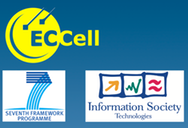The design of “smart polymer materials” that undergo signal-triggered,
reversible gel-solid transition, attracts substantial research efforts in the
last decade. Chemical,100 pH,101, electrical,102
photonic103 and thermal104 stimuli were used to induce
the gel-solid transitions. Different applications of signal-triggered polymer
films were suggested, including the phase transition processes for sensing,105
mechanical movements of micro-objects,106 stimuli-controlled
conductivity,107 permeability through the films,108 and
switchable photoelectrochemistry.109
Sol-gel transitions in the solution can be stimulated by the controlled
crosslinking and swelling of solubilized molecular components. The controlled
reversible switching of sol-gel transitions in solutions is, however, more
difficult. Photoisomerizable molecules revealed reversible light-induced
sol-gel transitions,110 yet the most promising materials (especially
for the present project) are biomolecules that undergo pH-induced sol-gel transitions.
The reversible pH-induced gelation of pectin111 or gastric mucin112
is well established. For pectin (a polysaccharide) widely used in the food,
cosmetics and pharmaceutical industries, a pH decrease to ca. pH = 4.5 results
in gelation, due to the neutralization of the carboxylic acid functionalities,
and the removal of the polyelectrolyte effect.
Accordingly, the solid-gel transition of polymer films linked to
electrodes or the sol-gel transitions of pectin containing-solutions or the
micelle-to-liposome transitions will be reversibly triggered by electrochemical
signals. These processes will address the compartmentalization and containment
issue that is one of the fundamental elements of the ECCell.
Polymer films that are linked to electrodes will be applied as matrices
for the electronically stimulated solid-hydrogel transitions and will be based
on the poly-N-isopropylacrylamide (poly NIPA). This is a thermosensitive
polymer that undergoes a gel-to-solid transition at ca. 30° C.
The transition temperature is affected by environmental co-effects such as the
co-existence of acrylic acid moieties, and pH that controls the H-bonds in the
polymer matrices. Accordingly, poly NIPA/acrylic acid copolymers will be
electropolymerized on Au electrodes. Redox-active units, such as quinone,
ferrocene or nile blue or even Ag+ ions will be tethered to the
acrylic acid units. The temperatures for gel-to-solid transitions will be
determined as a function of the redox state of the tethered units by the
application of impedance spectroscopy or surface plasmon resonance (SPR)
spectroscopy. These studies will identify redox-functionalized poly
NIPA/acrylic acid polymers that reveal electroswitchable solid-gel transitions
at a defined temperature. The study will be initially performed on macroscopic
electrodes, and then miniaturized on addressable microelectrodes in
microfluidic systems.
The sol-gel as well as micelle-to-liposome transitions will be stimulated
by electrically triggered pH changes. Towards these goals, Au electrodes will
be modified with monolayers or multilayers of pH-dependent redox labels.
Monolayers consisting of quinones , nile green or polymerized films consisting
of toluidine blue will be used to trigger the pH changes in the solution. Using
a typical monolayer coverage of 10–10 moles . cm–2
and an electrolyte volume of 1 microliter we estimate ca. 4 orders of magnitude
of pH changes. Accordingly, pectin solutions or amphiphilic DNA-block
copolymers will be included in miniaturized electrochemical cells, and the
sol-gel or micelle-to-liposome transitions by light scattering experiments.
These studies will identify the potential regions at which the pH changes
occur. The pH changes in the solutions will be followed by pH indicators or
miniaturized pH electrodes. By the deposition of different redox-active
monolayers/thin films on the electrodes in microfluidic systems, addressable pH
changes in confined channels will be achieved, and thus, regulated sol-gel or
micelle-to-liposome transitions in the respective channels will be driven.
